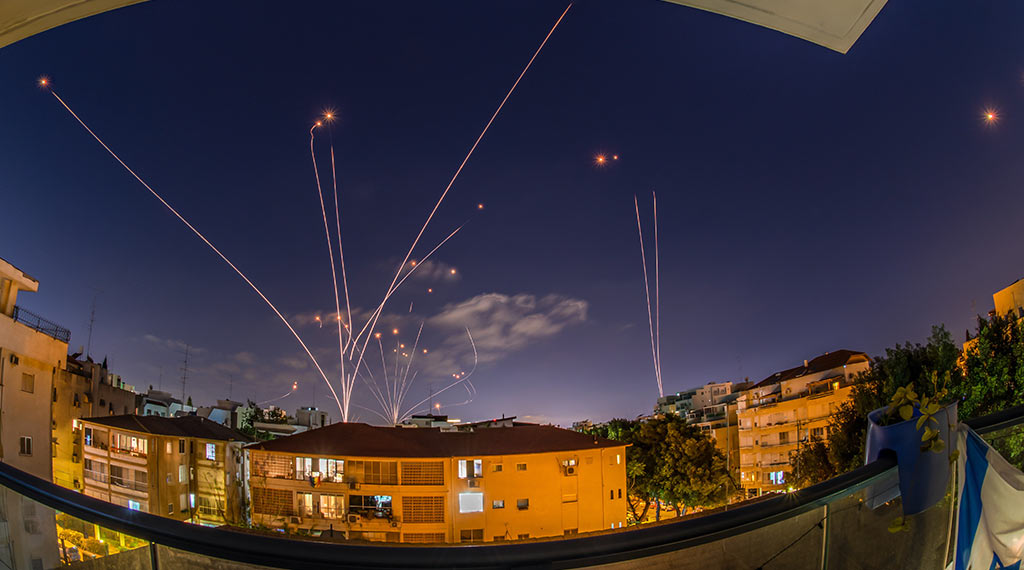
Consider this: if China sent one of its high-tech surveillance balloons over Israel, what would happen?
The answer: Israel would have sounded air raid sirens telling its citizens to go into shelters. It would then fire an air defense missile to take the balloon down. No hand-wringing. No waiting. No lies. Just eliminate the threat.
Israel has an extensive air defense system consisting of a high-low mix. That includes the Arrow 3 which can knock out ballistic missiles outside the atmosphere; David’s Sling which is designed to intercept enemy planes, drones, tactical ballistic missiles, medium- to long-range rockets and cruise missiles and; Iron Dome which can kill short-range rockets, drones and cruise missiles.
Recently, Israel has moved to better integrate its air defense system so it can hand off kill responsibilities based on the type of threat detected.
By contrast, the US has almost no air defenses, leaving the American people vulnerable to everything from drones to rockets to ICBMs. The one continental air defense system deployed is called the Ground Based Interceptor.
There are two units for this system, one in Alaska at Greely, and the other at Vandenberg Air Base in California. In total there are around 44 missiles available for defense, but reportedly they don’t work reliably and there are plans to fix them in the future.
Meanwhile, GBI can only protect a small part of the United States from North Korean and Chinese missiles.
The US also has the Terminal High Altitude Area Defense (THAAD) system, with a unit ready for deployment based at Fort Bliss, Texas. THAAD is in Hawaii and also on Guam. The US also has put a system in Korea and there are THAAD systems in Saudi Arabia and the UAE..
THAAD can defend an area of around 125 miles (201 kilometers) meaning that the system is best deployed close to where it can intercept enemy missiles.
It is not particularly well suited for homeland defense, although it could protect sensitive installations such as strategic missile bases or the US capital. THAAD’s intercept performance in tests is mixed, although in recent tests THAAD has performed better.
At sea, the US has the AEGIS ballistic missile defense system mounted on Ticonderoga Class cruisers and Arleigh Burke destroyers. The Biden administration has announced it is decommissioning the cruisers, weakening America’s at-sea air defense capabilities.
At present, there is no plan to replace the cruisers being sent to the scrap yard. The US has also put a land version of AEGIS in Romania, presumably to give it protection from Russian missile attacks. Japan also has AEGIS ships but rejected the land-based AEGIS system.
There is a consensus that AEGIS is a good air defense system, but as it operates at sea it requires frequent port visits for servicing and does not work well in poor weather. AEGIS is thus not a full-time air defense deterrent, but tests have shown it to be effective. AEGIS could help protect US territory, but mostly it operates abroad.
AEGIS, THAAD and GBI are designed primarily to go against enemy ballistic missiles and, in the case of AEGIS, against long-range ship-killer missiles including China’s DF-21D long-range “carrier killer” missile.
One of the reasons Russia and China are moving to hypersonic anti-ship missiles is that AEGIS can’t intercept them. Russia has one called the 3M22 Zircon; China claims to be developing one known as the YJ-21. Both use scramjet engines and are classed as anti-ship cruise missiles.
Over the years, the US has relied on massive retaliation if an enemy tries to launch a nuclear strike against the United States. Known as the MAD doctrine (mutually assured destruction), the idea is that the US could totally obliterate any enemy that tried a nuclear strike against the US, but the US would have to accept that most, if not all, of the continental US would also be destroyed.
In the 1980s and since there was concern that the Soviet Union (now Russia) would develop a first-strike capability that would knock out the US ability to retaliate and thus “win” a nuclear war. China’s recent balloon hovering over America’s strategic missile defense installations is part of the process to figure out how to neutralize America’s defense capabilities.
Clearly Israel, a small country, must defend its airspace. The MAD doctrine for Israel is a suicide doctrine and Israel appears to have no intention to go down that road. That’s why Israeli keeps working on its missile defenses and may even take steps in future to knock out enemy missiles before they are launched, namely by a full-scale attack on Iran.
The US does not think the way Israel does, but maybe the Chinese balloon incident will lead to changes in US doctrine. As hypersonic arsenals grow, answers are needed including air defenses that can protect US territory. The MAD doctrine, as it is, no longer suffices.
- Trump and Ukraine: what Russia wants, what Trump could do - November 8, 2024
- North Korean troops in Kursk could backfire on Moscow, Pyongyang - November 1, 2024
- Secure enclaves: bad CHIPS Act idea wasting billions - August 12, 2024
